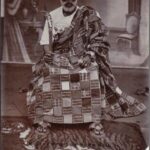SEEPAPITSO II
- 2 Min Read
Seepapitso, (1883-1916), the Kgosi (traditional ruler) of the Bangwaketse for a brief six years, succeeded his famous father, Bathoen I, in 1910. Seepapitso was a progressive leader who initiated many reforms for the social and economic advancement of his people during the colonial period in Botswana. He strongly opposed the incorporation of his people into the Union of South Africa.
Seepapitso sought to improve the economic conditions under which the Bangwaketse lived. He encouraged water development schemes to aid agriculture, constructing dams and sinking bore-holes to tap underground water. He also encouraged the Bangwaketse to use better methods of cattle management.
In the area of education and health, he fostered education as an important investment in the future and supported a school committee created by his father. Seepapitso invited a medical practitioner to reside among the Bangwaketse and placed strict controls on the activities of the dingaka (African healers).
In the political and judicial areas he codified seNgwaketse laws and introduced Western-style record keeping for the proceedings of the Lekgotla (court) and Pitso (public meetings). Seepapitso continued his father’s opposition to the incorporation of the Bangwaketse into the new Union of South Africa and dispatched a protest to the British in 1912 against the “Schedule of the Union Constitution” which provided for future incorporation.
He instituted reforms which affected the marriage system, the laws of inheritance and the civil status of various social classes in Ngwaketse society. Widows and daughters were now to receive shares in the division of estates and in divorce cases, while a spouse found guilty of misdeeds was forced to pay compensation to the other spouse.
In 1910 Seepapitso enforced the ban on the Ethiopian Church instituted by his father in 1908 and banished its leader, Mothowagae of the Boikgololo, when he suspected the movement to have political objectives detrimental to his interests. Seepapitso was killed by his brother Moyapitso in 1916 in a dispute over the inheritance of Bathoen’s estate. Seepapitso’s son Bathoen II, was then eight years old. Regents ruled the Ngwaketse for 12 years after Seepapitso’s death.
C. TSEHLOANE KETO





